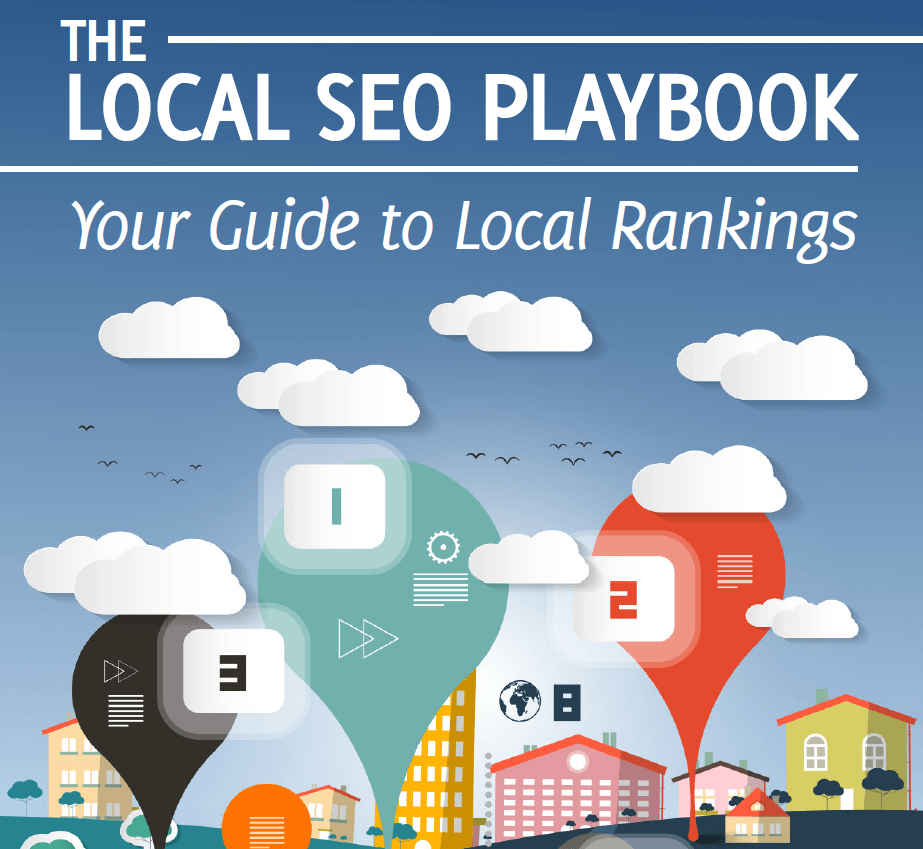Page One On Google Is Your New Business Card
by Dan Gershenson
Do a search for your name, your company name, your product or service names. Whatever you find on page one in the Google SERPs amounts to a significant collage of how your brand is seen in the wild today.
See, it doesn’t matter if your best client tells their best friend you are the most awesome thing since people started using the word awesome – Google you they will and what they find is all part of the buying process.
Controlling what people find when they search is a branch of marketing that is commonly referred to today as reputation management.
Some folks limit the field to reviews, but it’s much larger than that.
Consider this encyclopedia description: Reputation management is the practice of attempting to shape public perception of a person or organization by influencing online information about that entity.
Reputation management used to fall almost exclusively under the heading of PR. If the local newspaper decided to run an expose on your lousy customer service, then your PR firm would do what they could to make it go away. And frankly, it often did blow over.
Today, however, everyone is the local newspaper and what they publish lives on a permanent record of how you’ve wronged them – accurate or not.
And unfortunately, Hell have no fury like a customer scorned. Google your favorite brand and add the word “sucks” in your search. So Apple + sucks. What you’ll find no matter the brand is at least a handful of sites dedicated to letting you know what this means.
It’s simply a reality in the digital world. But, it’s not just that people have the ability to rate, review and otherwise expose companies that don’t live up to their promises, finding and using these reviews has become a part of the buying behavior.
A recent BrightLocal survey found that 88% of consumers say that they trust online reviews as much as personal recommendations. That’s right the review from a total stranger carries as much sway as a personal recommendation.
Page one on Google: new rules apply
In a world where everyone is a publisher, brands must adhere to a handful of rules when it comes to customer interaction. (By the way, these have always applied, we just can’t get away with not following them anymore.)
Keep your promises
Okay, this has always been a very good idea, but today, if you don’t, it’s over. If you ship late, don’t honor your guarantee, or simply don’t respond to customer requests, you can bet it will make headlines somewhere.
Be transparent
I know this term is very overused, but when people can and do publish what they experience, it makes the need to be open and honest about what happened, what’s next, and what you’ve learned part of the deal.
Respond publicly
Turn to Twitter, and you’ll see plenty of organizations using the tool as a customer service platform. You may save one customer with a direct and brilliant reply, but you will likely positively impact many others paying attention as well. (Actually, the best way to get help with your Google My Business profile is via GoogleMyBusiness on Twitter. ( GoogleMyBusiness on Twitter .)
Here LLBean hosts reviews on their site and responds to negative reviews in a way that limits the negative impact.
Address criticism
Some people are just never happy, but some people make a useful and valid point when they level criticism on a brand. Pay attention to what people are saying, invite feedback at every turn, and join the conversation.
Learn from your mistakes
One of the often overlooked positives in making mistakes or hearing critical reviews is that they are an opportunity to get better. Pick up a copy of J ay Baer’s Hug Your Haters for some serious tips on playing by these new rules to win.
The best defense
Cliché as it may be to state – when it comes to reputation and review management, the best defense is a good offense.
Inevitably most businesses let a customer or two down and must suffer the blows of a negative review. Or worse – the unwarranted attacks of a former employee or competitor’s scheme.
If you wait to take action after the fact, your job will be much tougher. If, however, you proactively claim real estate, nurture relationships and recruit positive coverage, you’ll be well shielded from the negative if it should arise.
A word about negative reviews
Negative reviews hurt, they feel kind of personal. I get 90% glowing reviews on my books, but the 1 or 2 negative reviews always seem to get under my skin. It’s human nature.
When and if you get some negative coverage, particularly in the form of a scathing review from a past customer, relax and go to work on limiting the damage.
First and foremost make an honest assessment. Is there anything you could have done better, is this a one-time freak case, do you have a side of the story to share.
But, most of all, don’t throw gas on the fire with an aggressive response.
Here are some things to consider about purely negative reviews and what you can do about them. Both Google and Yelp give you the ability to flag any review and ask that it be deleted if it meets any of the following.
Opinion vs. facts
In the US the 1st Amendment gives people the right to free speech. Anyone can express their opinion about something. What they cannot do is state facts that are not true. So, if they say the food was terrible, that’s fair game. But if they say they doubt you even have a health inspection clearance, well that they cannot do!
False information
If someone claims that you were not open when you said or that you did not offer what you advertised and this is, in fact false, you can ask to have it removed.
Conflict of interest
If the spouse or employee of a competitor posts a review to hurt your business you have the right to demonstrate that there is a clear conflict involved and the review may be considered for removal.
Hate, sexually explicit
Obviously, inappropriate is inappropriate positive or negative, and the review sites want this removed as much as anyone.
Address negative reviews head on, but don’t let them ruin your reputation. Sometimes things happen and responding to a negative review can be your chance to demonstrate what your brand is really about.
Your plan of action
The following five steps should be part of your reputation plan of action. Set some goals around reviews and results and go to work on each element consistently.
Set up alerts
Use a tool like BuzzSumo (BuzzSumo is paid vs. free Google Alerts, but I think BuzzSumo is far more effective.) to set up a series of alerts.
I create alerts for my name, my company name and the titles of my books and receive a daily any time those terms are mentioned online. In addition to capturing in the moment mentions to manage, you’ll also find some very positive opportunities to engage other bloggers and businesses.
BuzzSumo lets you monitor all mentions of your brand with daily alerts
Monitor channels
Once you’ve set up comments on your blog, a Facebook page, and Twitter profile, make sure you actively monitor each for opportunities to engage and respond. Sometimes simply acknowledging a bad review or comment can help put out the fire, but timeliness is key.
Don’t forget to check out some of the sites set up just for negative feedback like RipOffReport and Complaints Board .
Claim real estate
As stated above, go on the offense. Claim and monitor all of the profiles you can. While you may think that LinkedIn isn’t a great tool for your business, there’s a very high probability that your LinkedIn profile will rank on page one of Google for your name. Why not create as many pages as possible where you control the content?
Guess what – guest posting on other blogs and publications is a great SEO and awareness play, but it’s also an essential reputation management play . When you Google my name dozens of articles I’ve written for other sites appear in the first few pages essentially locking up lots of prime real estate.
Host feedback
If you sell products and services, you should consider giving people the ability to offer feedback on your site. This way you can see what’s being said, monitor for accuracy and respond directly. Of course, you must be transparent here as it will be pretty obvious if you simply delete negative reviews.
There’s also nothing wrong with having some fun with this too.
This sandwich shop got a lot of positive buzz by poking a little fun at the sometimes over the top negative comments businesses receive.
Get proactive
Even if you have lots of raving fans, you probably know how hard it is to get reviews in the places you need them – Google, Yelp, and industry specific review sites.
People love to express their opinion and maybe you even get lots of compliments and unsolicited emails from raving fans. So, let’s get those reviews online with a proactive review funnel.
Review funnel explained
A review funnel is simply a tool to make it much easier for your happy customers to place reviews of your business on the important review websites. But, if done effectively, it’s also a tool to help head off potential negative reviews before they happen.
Here are the elements of a review funnel
- Invite your customers to a place on your site or a landing page where you invite reviews
- Offer them an initial gauge where they can give a 1-5 star rating
- Anyone that rates 3 or below stars is offered the option to tell you what you could have done better so you can address the issue immediately
- Anyone that rates 4 or above is taken to a page featuring all of the various places they can leave a review with a link to the right page and directions for how to leave a review on that particular site
With a review funnel in place, your team can confidently invite any customer to leave a review, knowing you’ve made it as easy as possible for them to do so.
The post Page One on Google Is Your New Business Card appeared first on Caliber Brand Strategy + Content Marketing.
The Fractional CMO







